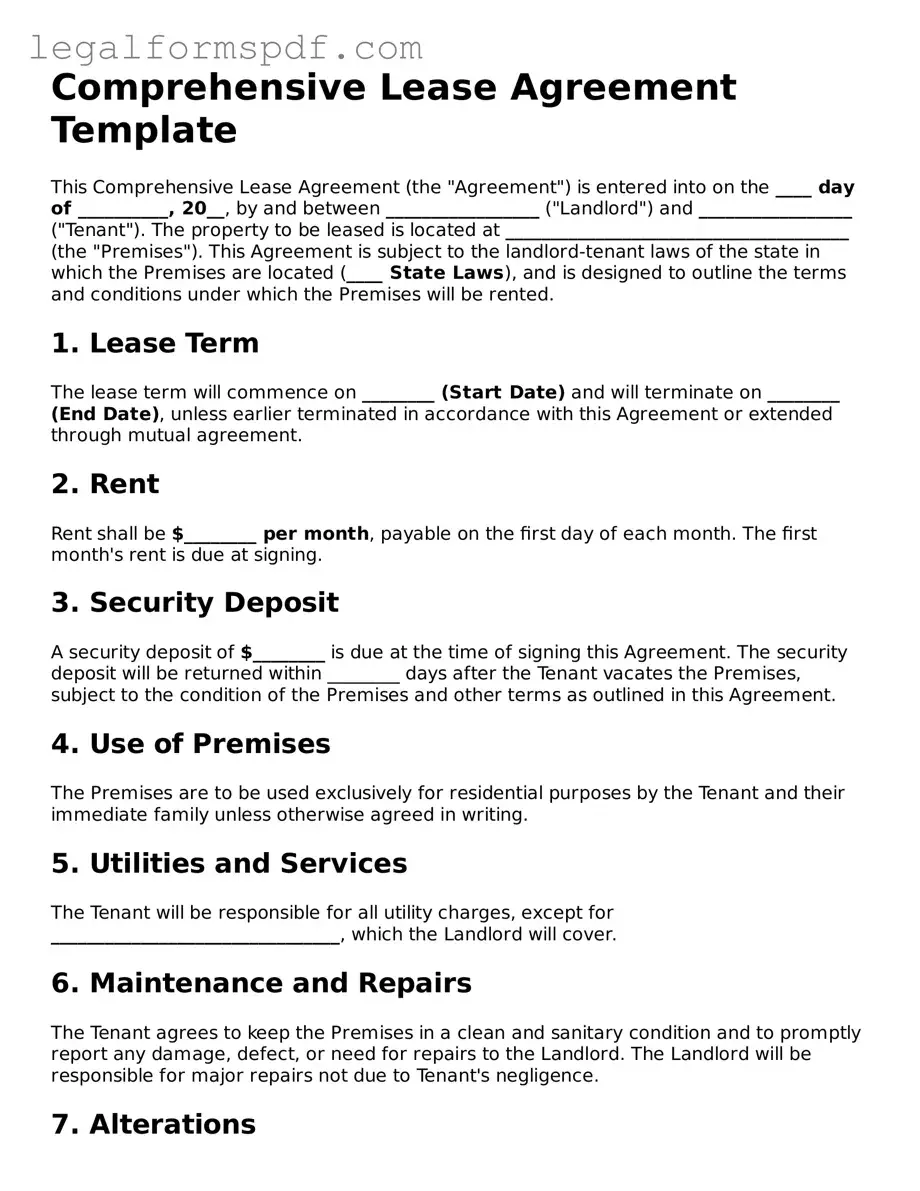What is a Lease Agreement?
A Lease Agreement is a contract between a landlord and a tenant that outlines the terms and conditions of renting property. It specifies the responsibilities of both parties during the lease period, including rent payment, maintenance duties, and any other conditions agreed upon.
How long does a Lease Agreement typically last?
The length of a Lease Agreement can vary, but the most common term is one year. Short-term leases might last for three to six months, while long-term leases could go beyond one year, with some extending up to five years or more, depending on what both parties agree to.
Can a Lease Agreement be terminated early?
Yes, a Lease Agreement can be terminated early if both the landlord and the tenant agree to it. There are also certain conditions, such as breach of contract or specific clauses within the agreement, like an early termination clause, that can allow one party to terminate the lease early.
What happens if rent is paid late?
If rent is paid late, the Lease Agreement typically outlines any late fees or penalties. The landlord may also have the right to issue a notice to the tenant, demanding payment by a certain date before taking further legal action.
Is a security deposit always required?
While it's common for landlords to require a security deposit to cover potential damages to the property, state laws vary on whether it's required and the maximum amount that can be requested. It's important for both landlords and tenants to understand their local laws regarding security deposits.
Can the terms of a Lease Agreement be modified?
Yes, the terms of a Lease Agreement can be modified if both the landlord and the tenant agree to the changes. Any modifications should be made in writing and signed by both parties to avoid future disputes.
Who is responsible for maintenance and repairs?
Responsibility for maintenance and repairs is typically outlined in the Lease Agreement. Generally, landlords take care of significant repairs and maintenance of the property, while tenants may be responsible for minor issues and keeping the property clean and undamaged.
Are pets allowed in a leased property?
Whether pets are allowed in a leased property is up to the landlord and should be explicitly stated in the Lease Agreement. Some landlords allow pets with specific conditions, such as a pet deposit or size/breed restrictions, while others may not allow pets at all.
What happens if either party breaks the agreement?
If either party breaks the agreement, consequences should be outlined in the contract itself. This may include the opportunity to correct the issue, termination of the lease, or legal action, depending on the severity of the breach.
Do I need a lawyer to create a Lease Agreement?
While it's possible to create a Lease Agreement on your own, consulting with a lawyer can ensure that the agreement complies with local laws and fully protects your rights. It’s especially recommended if the property or lease conditions have complex requirements.
